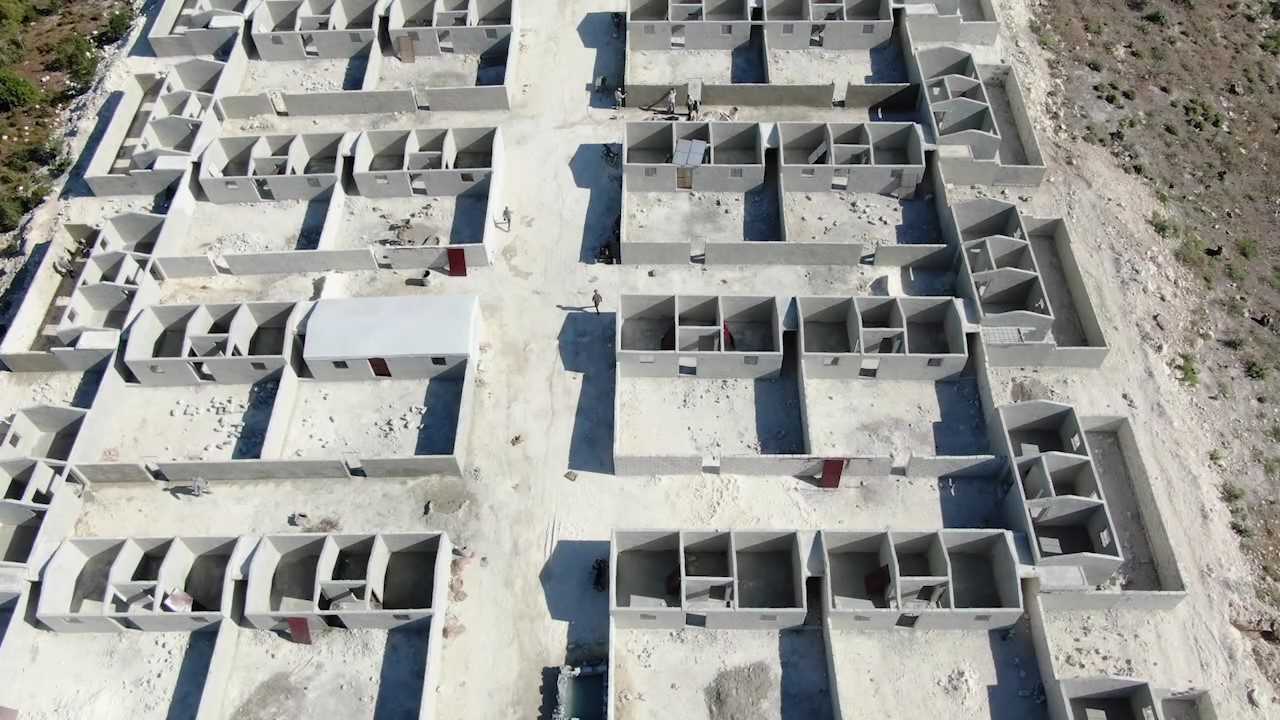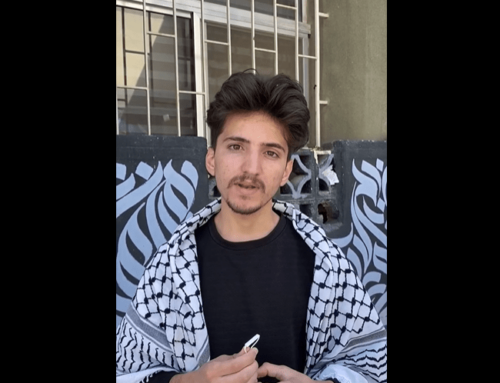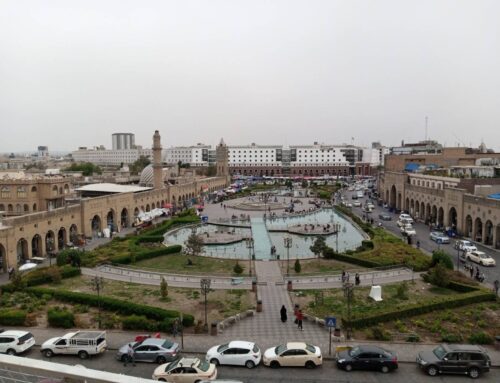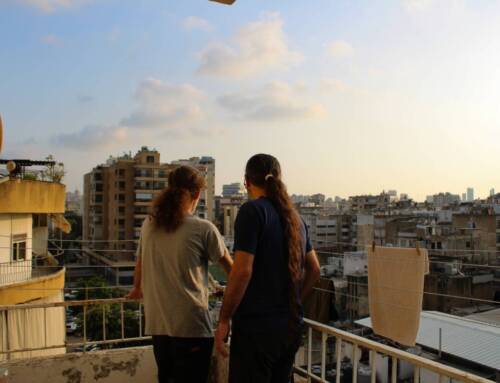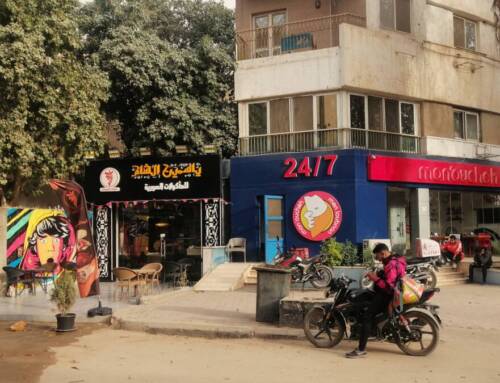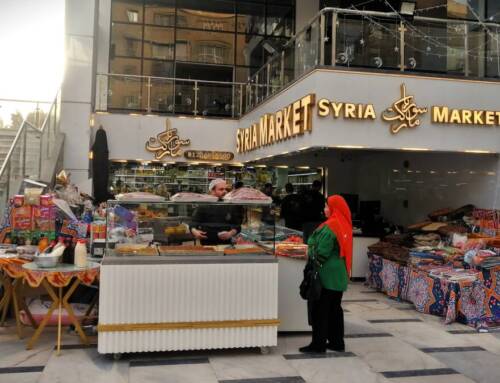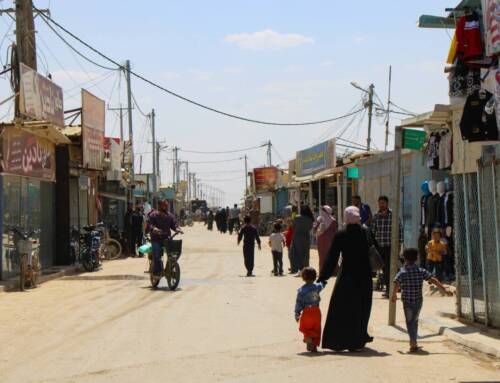Turkey eyes voluntary return for 1 million Syrian refugees, but ‘the problem is bigger than providing housing’
Turkey plans to build 250,000 concrete housing units in northern Syria as it eyes the “voluntary return” of one million refugees. But more than housing stands in the way of returns.
17 May 2022
IDLIB — Turkish President Recep Tayyip Erdoğan announced an eight-phase plan to facilitate the voluntary return of one million Syrian refugees living in Turkey on May 3, in comments made while participating via video in a ceremony handing over cinder block housing units to beneficiaries in the northern Idlib al-Kamouna camps,
Although Turkish statements regarding the return of refugees to Syria are not new, the remarks indicate that Ankara is serious about carrying it out. They also complement domestic policies of deporting Syrian refugees in violation of temporary protection regulations, especially from cities crowded with Syrians, such as Istanbul, Ankara and Gaziantep.
According to the Turkish plan, voluntary return is to begin from densely populated cities to areas in Syria that are militarily and politically stable and secure. The areas referenced are those supported by Turkey in northwestern Syria, as well as the cities of Ras al-Ain and Tal Abyad in northeastern Syria.
The plan, according to official statements, aims to improve the economic sector in areas designated for refugee returns by establishing commercial and industrial zones, building markets and providing job opportunities. But this does not dispel the fears of Syrians living in Turkey about security and economic repercussions if they return.
Between the beginning of 2022 to April 5, the Syrian Response Coordination Group, an Idlib-based NGO, documented more than 782 attacks or violations by the Syrian regime, Russia and the Syrian Democratic Forces (SDF). In the documented incidents, 47 people were killed, including 13 children and four women, and more than 21 service facilities were damaged.
The plan also does not ensure refugees return to their places of origin that are now controlled by the regime, as in the case of Ghassan Ali, who is from the southern Idlib town of Maarat al-Numan. He insists on returning “to my home,” he told Syria Direct, and fears a “bad living and economic situation, like that of my relatives in the Killi town camps north of Idlib.”
In Turkey, al-Ali, who has lived in the southern city of Reyhanli for seven years, can provide for his family of seven by working in agriculture. “If I return to Syria, I may not find work to support my family,” he said.
Voluntary or forced return?
After spending five years in Turkey with her three children, Khadija al-Omar (a pseudonym) is concerned about official statements regarding the return of refugees. She worries she could be forced to go back and start a new life in Syria.
Al-Omar works at a sewing workshop in Nizip, a city in Turkey’s Gaziantep province across the border from Aleppo. She is the sole breadwinner for her family after losing her husband in a regime bombing of Aleppo city’s al-Firdous neighborhood in 2015. While she does not violate Turkey’s temporary protection law—for example, by moving or working without a permit—she fears “that the Turkish plan targets all Syrians.”
“Going back is not an option, unless I am forced to,” al-Omar said. “Where would I go back to, with my house under Syrian regime control?”
Turkish writer Celal Demir, who closely follows Syrian refugee issues in Turkey, said the plan does not include forced deportation, and is “based on encouraging completely voluntary return under United Nations supervision.” That is not at odds with “Turkey’s natural right to encourage refugees to return to their country,” he told Syria Direct.
But Syrians are increasingly worried that the voluntary return plan could be a gateway to forced returns, and an official response by Ankara to Turkish opposition parties opposed to Syrian refugees’ presence in the country. In late April, Ankara canceled its longstanding policy of allowing Syrians to make temporary visits home during the Eid al-Fitr holiday, in line with opposition parties’ rhetoric.
Erdoğan’s May 3 announcement came as the ruling Justice and Development Party (AKP) prepares for elections in 2023. The Turkish opposition places the refugee issue at the top of its electoral platforms, which “required a response from the ruling party to put out the spark of this campaign,” according to Demir.
Syrians base their current fears on the forced deportations of some 20,000 Syrian refugees, according to official figures, for violating Turkish laws.
However, Syrian lawyer Abdulnasser Houshan, who lives in Turkey, believes it is unlikely that Turkey would implement the voluntary return program by force. “Turkey is ruled by a constitution and laws regulating the Turkish government and opposition,” he said. “Syrians cannot be forced to leave.”
Turkey’s constitution “complies with international treaties and conventions on refugees and their protection,” Houshan said, and Turkey deals with Syrians based on these agreements and the country’s Temporary Protection Regulation. “They are not sent back to Syria unless they themselves ask to return.”
No guarantees
The Turkish plan aims to return Syrian refugees to areas controlled by the Syrian opposition and Hay’at Tahrir al-Sham in northwestern Syria. Turkey considers areas of its influence in Syria, namely the Euphrates Shield, Olive Branch and Peace Spring areas—named for cross-border military operations by the Turkish military and Ankara-backed Syrian opposition factions between 2016 and 2019—safe for return.
“The areas discussed are comparatively safe and have not seen war since the implementation of the Turkish understandings in 2020,” Demir said, referring to a March 2020 ceasefire agreement in northwestern Syria between Turkey and Russia. “The security incidents there are less than 10 percent of the total unrest and problems in Syria.”
Demir based this assessment on “the presence of six million people in these areas, alongside Turkish employees,” stressing that “Turkey is also working for the safety of its employees.”
But Muhammad Abdelwahhab, a Syrian refugee who has lived in the Turkish city of Gaziantep for nine years, said “there is no safe place inside Syria with the presence of the Syrian regime.”
Abdelwahhab, who is from the southern Idlib village of Sfuhon in the Jabal al-Zawiya area, said the area cannot be deemed safe on the basis of the intensity of bombardment and the extent of the damage caused by it. Chaos in northwestern Syria, infighting, the “bad reputations” of some Turkish-backed factions and the low standard of living in Idlib “all confirms that there is no safety there,” he said.
Turkey’s areas of influence in northwestern Syria are witnessing continued violations against civilians, some at the hands of Turkish-backed factions. As one example, the commander of the Sultan Suleiman Shah Division, Muhammad al-Jassim (also known as Abu Amsha) has been accused of rape, kidnapping, enforced disappearance and complicity in violations against Kurds in Afrin city, but local attempts to hold him accountable have not succeeded because he is backed by Turkey.
On top of that, there are no assurances for returnees that “the areas designated to receive refugees will not be subjected to a military escalation,” Syrian lawyer Houshan said, especially since the return plan “did not explicitly refer to this aspect.”
For that reason, Syrian refugees will not accept the idea of “voluntary return” unless the Turkish plan is internationally adopted and “provided political, financial and legal support through UN institutions,” Houshan said.
Will cinder blocks solve the refugee crisis?
To accommodate the return of one million refugees to Syria, Turkey aims to construct 250,000 cinder block residences, as stated by Turkish Minister of Interior Süleyman Soylu on May 5. Some 100,000 of the residences are to be handed over to their beneficiaries by the end of the year.
The planned residences are between 40 and 80 square meters, according to Soylu, who said the project is fully funded by international humanitarian organizations, not from the Turkish government’s budget.
The Turkish NGO IHH Humanitarian Relief Foundation has built more than 25,000 residences in Idlib province and the Euphrates Shield area of the northern Aleppo countryside. It is currently working to implement projects in the Olive Branch area, in the Afrin area of northern Aleppo, IHH Activities Coordinator Zeki Tahiroğlu told Syria Direct. IHH is one of the Turkish organizations implementing cinder block housing projects in northern Syria.
IHH plans to “build houses with two or three floors, with each floor containing two or four apartments to accommodate larger numbers” of people, Tahiroğlu said. The housing projects are served by schools, health centers and mosques, he added.
Ayham Gharibi, 27, who lives in one IHH-supported project in the northern Idlib town of Killi, said displaced people helped pay construction costs alongside the organization. He told Syria Direct he paid $250 for the construction workers, while IHH “provided building materials worth up to $700, as well as the land.”

A house in the IHH-supported camp where Ayham Gharibi lives, 5/5/2022 (Mahmoud Hamza)
Gharibi, who was displaced from the town of Kafr Aweid south of Idlib in early 2020, does not have a cement roof for his 48-square-meter house. Its plastic covering “doesn’t shelter us from the summer heat or the winter cold,” he said. The al-Ikha camp, where he lives, is also far from basic services, with the nearest school located four kilometers away.
But the biggest challenge facing Turkey’s return plan is not accommodating a million refugees, but rather “creating the economic conditions for their return,” economic researcher Younes al-Karim told Syria Direct. The areas designated for return are “small and unprepared, which means turning refugees into consuming and unproductive groups,” he said.
Abdelwahhab, in Gaziantep, said his return to Syria is “not tied to the presence of concrete houses.” He spent four years living in the Nizip camp near Gaziantep before moving into a house.
“The problem is bigger than providing housing,” he said. Economic and security conditions have to be taken into account to convince people to return, including “providing job opportunities and ensuring people return to their homes.”
For him, going back to Syria without the possibility of returning to his town—located on a contact line between regime and opposition forces—would mean “a new journey of instability,” and a transformation from a refugee in Turkey to an internally displaced person in Syria.
This report was originally published in Arabic and translated into English by Mateo Nelson.

